As the global automotive market grows more interconnected, understanding regional regulatory requirements becomes increasingly important—especially when it comes to vehicle compliance and type approvals. Two key players in the industry, the European Union and India, have distinct systems in place to ensure safety, environmental protection, and standardisation in the automotive sector. This blog outlines the core differences between EU Whole Vehicle Type Approval (WVTA) and India’s Automotive Industry Standards (AIS), providing insight for manufacturers, importers, and regulatory professionals.
1. Regulatory Framework
In the EU, the WVTA system, governed by Regulation (EU) 2018/858, provides a harmonised approval process that enables a vehicle to be sold across all 27 member states without additional testing. In contrast, India operates under the Central Motor Vehicles Rules (CMVR), 1989, with standards developed by the Automotive Industry Standards (AIS) committee. This framework requires more fragmented approvals—often component-wise—as well as a national vehicle type approval (VA).
2. Testing & Certification Bodies
European approvals are handled by authorised technical services and national type approval authorities such as TÜV and UTAC. India relies on key institutions including the Automotive Research Association of India (ARAI), the International Centre for Automotive Technology (ICAT), and others like CIRT and VRDE.
3. Emission Standards & Testing Cycles
While both regions have similar environmental goals, their testing procedures differ. Europe currently follows Euro 6 (with Euro 7 on the horizon in 2026), and utilises WLTP and RDE cycles to evaluate real-world emissions. India enforces Bharat Stage VI (BS VI), aligned closely with Euro 6, but continues to rely primarily on the Modified Indian Drive Cycle (MIDC), with Real Driving Emissions (RDE) now introduced.
4. Crash Safety & Market Surveillance
The EU mandates compliance with UNECE crash safety standards and promotes transparency through Euro NCAP safety ratings. In India, safety testing under Bharat NCAP only became voluntary in 2023, with enforcement still developing. Similarly, while the EU enforces rigorous post-market surveillance, India’s efforts in this area are currently more limited—though recent BIS standard updates aim to change this.
5. Electric Vehicle (EV) Regulations
As electric mobility gains traction globally, both markets are strengthening their EV compliance frameworks. Europe enforces UNECE standards for battery safety (R100), fire safety (R136), cybersecurity (R155), and software updates (R156). India has introduced similar standards—AIS-038, AIS-156, AIS-004, and AIS-157—though enforcement is still in its early stages.
6. Homologation Timelines & Cost
Due to its extensive procedures and robust post-market requirements, the EU approval process typically takes 6 to 12 months and comes with higher associated costs. India offers a relatively shorter 3 to 6 month process, with lower costs, although this is expected to change as BIS and Bharat NCAP standards evolve.
Summary
| Aspect | EU Automotive Approval (WVTA/UNECE) | Indian Automotive Approval (AIS/BIS) |
|---|---|---|
| Regulatory Framework | EU Whole Vehicle Type Approval (WVTA) under Regulation (EU) 2018/858 | Automotive Industry Standards (AIS) under CMVR, 1989 |
| Testing Authority | Approved Technical Services (e.g. TÜV, UTAC, Applus IDIADA) & National Type Approval Authorities (TAA) | ARAI, ICAT, CIRT, VRDE |
| Certification Type | Whole Vehicle Type Approval (WVTA) – one approval valid across the EU | Component-wise and Vehicle Type Approval (VA) – separate approvals required |
| Emission Standards | Euro 6 (Current), Euro 7 (Upcoming in 2026) | Bharat Stage VI (aligned with Euro 6) |
| Testing Cycles for Emissions | WLTP (Worldwide Harmonized Light Vehicles Test Procedure), RDE (Real Driving Emissions) | MIDC (Modified Indian Drive Cycle), RDE for BS VI |
| Crash Safety Testing | Mandatory Euro NCAP ratings & UNECE crash test compliance | Not mandatory under CMVR; Bharat NCAP introduced in 2023 |
| Electric Vehicle Standards | UNECE R100 (Battery), R136 (EV fire safety), R155 (Cybersecurity), R156 (Software updates) | AIS-038, AIS-156 (Battery), AIS-004 (Charging), AIS-157 (Cybersecurity) |
| Approval Validity | Valid across all 27 EU member states | National approval only; separate export approvals required |
| Market Surveillance | Ongoing post-market surveillance by EU authorities | Limited but improving enforcement through BIS |
| Software & Cybersecurity | UNECE R155 (Cybersecurity), R156 (OTA Updates) – Mandatory from 2024 | AIS-157 introduced, not yet fully enforced |
| EV Fire Safety | UNECE R136 (Mandatory) | AIS-156 & AIS-038 address fire safety |
| Homologation Duration | 6–12 months (longer due to stringent processes) | 3–6 months (varies by vehicle category) |
| Cost of Approval | Higher due to extensive requirements | Lower, but increasing with stricter BIS and NCAP standards |
Key Takeaways
EU’s WVTA ensures a single approval enables market access across all EU nations, supported by strong safety and environmental standards.
India’s AIS system is more fragmented but is evolving rapidly to align with international benchmarks.
Crash safety and EV standards in India are progressing, with increased focus on battery safety, cybersecurity, and fire protection.
Emission standards are nearly aligned, but testing cycles and enforcement rigor still differ significantly.
Market surveillance and software update regulations are more robust in the EU, while India is in the process of building its capacity.
Understanding these differences is crucial for automotive companies aiming to enter or operate in either market. As both regulatory landscapes continue to evolve, staying updated and ensuring compliance will be essential for long-term success in the global automotive industry.

